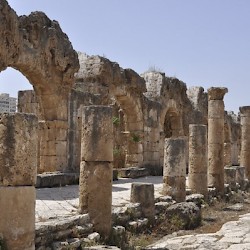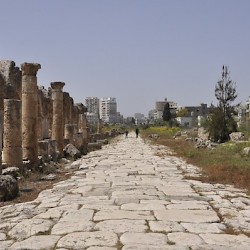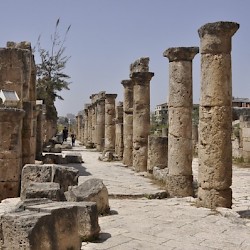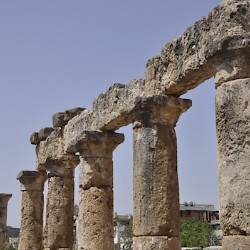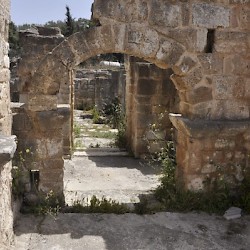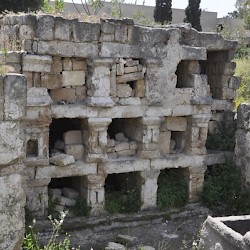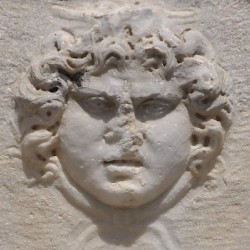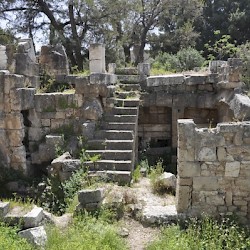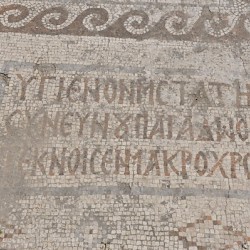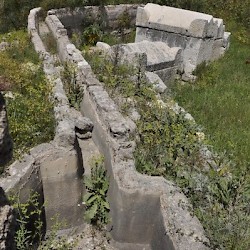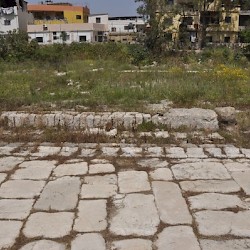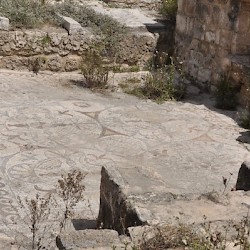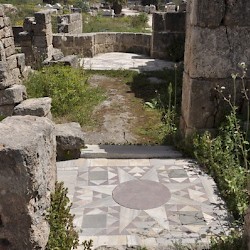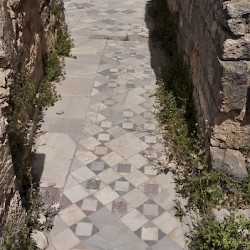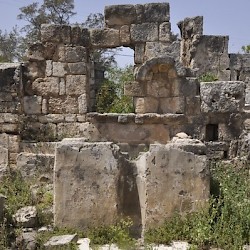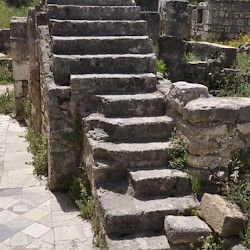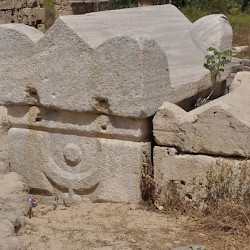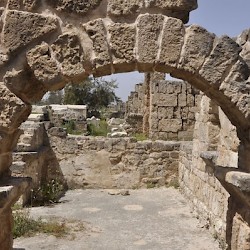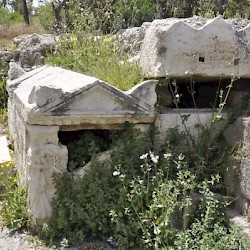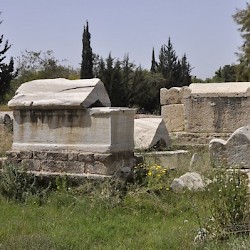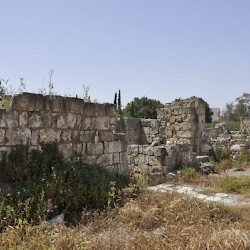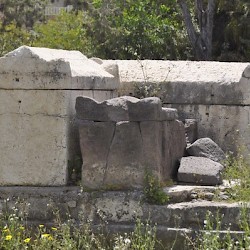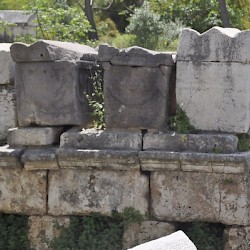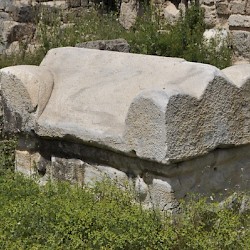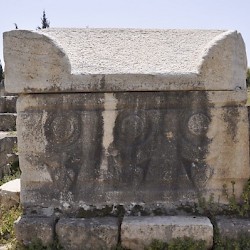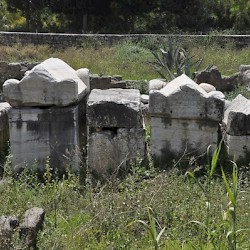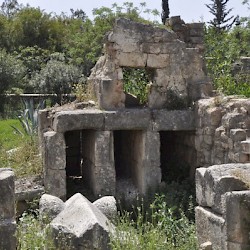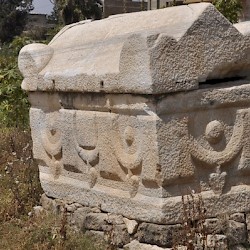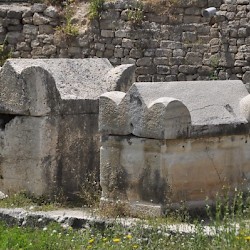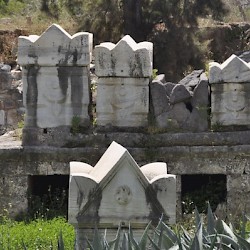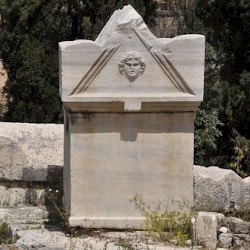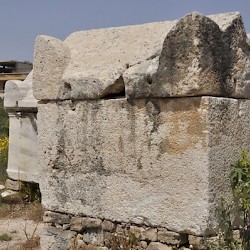Tyre, Al-Bass Cemetery
Q15060274Tyre (Phoenician צר, ṣūr, "rock"; Greek Τύρος; Latin Tyrus): port in Phoenicia and one of the main cities in the eastern Mediterranean.
Cemetery
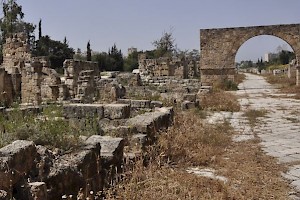
The archaeological site known as "Al-Bass" in Tyre is more or less at the beginning of Alexander's Dam. In other words, it lies directly east of the modern city, more or less halfway along the road to Al-Ma'shook hill. There is a straight road, leading out of Tyre, passing along the Hippodrome; after the Honorific Arch, where the ancient traveler left the city, he would pass along hundreds and hundreds of tombs. Along this road was the aqueduct - and consequently, it comes as no surprise that there was a nymphaeum (a public fountain) as well.
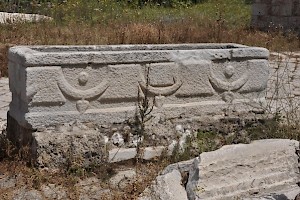
The visitor will recognize several kinds of tombs. In the first place, the sarcophagi, usually made of Proconessian marble, imported from the Sea of Marmara. These large stone tombs were delivered in Tyre more or less unfinished; a local sculptor completed the decoration, which usually consisted of garlands and bull's heads. Often, they were rendered very simplified, because the details would be painted.
Some sarcophagi were remarkably beautiful; they are now in the National Museum in Beyrut (more).
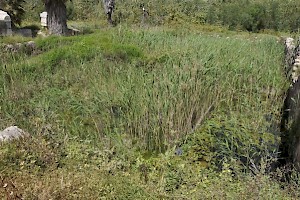
There were also family tombs, which could have a small kitchen for the funeral meals. Tower tombs had two levels (the top level usually has disappeared). In columbaria, the urns were placed of people who had been cremated.
Between all these tombs were several small sanctuaries. For example, there is a shrine, dedicated to the god Apollo, dating to the first century BCE. It appears to have been visited mostly by women. In Late Antiquity, it was converted into a Christian place of worship, and it contains the oldest fresco of the Virgin Mary (early fifth century). There is also a small church in the Al-Bass cemetery, with many ancient mosaics.
The road itself is remarkably free of the tracks of ancient carts. It was repaved in the Byzantine age; near the Great Arch, you can still see the two levels.
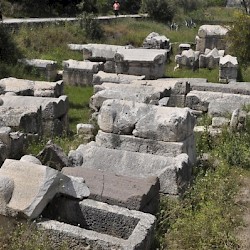 Al-Bass Cemetery, general view |
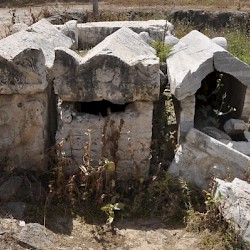 Tyre, Al-Bass Cemetery, sarcophagi |
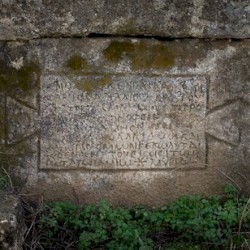 Tyre, Al-Bass Cemetery, Epitaph |
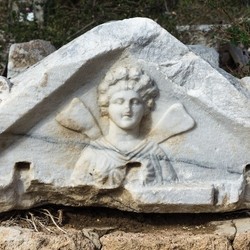 Tyre, Al-Bass Cemetery, Relief of Psyche |
